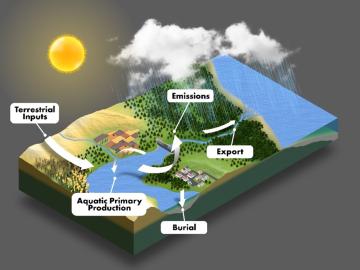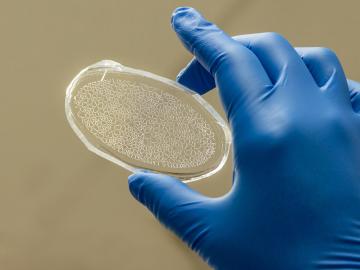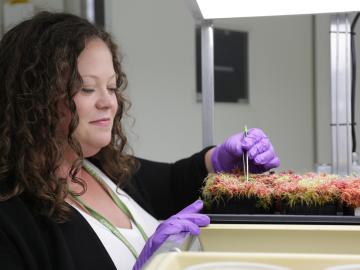
Filter News
Area of Research
- (-) Biology and Environment (78)
- (-) Neutron Science (7)
- Advanced Manufacturing (1)
- Biological Systems (2)
- Biology and Soft Matter (1)
- Computational Engineering (1)
- Energy Science (43)
- Fusion and Fission (1)
- Isotopes (1)
- Materials (13)
- Materials for Computing (1)
- Mathematics (1)
- National Security (6)
- Nuclear Science and Technology (1)
- Quantum information Science (1)
- Supercomputing (21)
News Topics
- (-) Bioenergy (52)
- 3-D Printing/Advanced Manufacturing (15)
- Advanced Reactors (2)
- Artificial Intelligence (14)
- Big Data (11)
- Biology (78)
- Biomedical (29)
- Biotechnology (14)
- Buildings (2)
- Chemical Sciences (15)
- Clean Water (13)
- Composites (5)
- Computer Science (31)
- Coronavirus (20)
- Critical Materials (1)
- Cybersecurity (1)
- Energy Storage (13)
- Environment (99)
- Exascale Computing (4)
- Fossil Energy (1)
- Frontier (4)
- Fusion (1)
- Grid (3)
- High-Performance Computing (22)
- Hydropower (9)
- Isotopes (2)
- Machine Learning (11)
- Materials (25)
- Materials Science (28)
- Mathematics (4)
- Mercury (7)
- Microscopy (13)
- Molten Salt (1)
- Nanotechnology (17)
- National Security (5)
- Neutron Science (120)
- Nuclear Energy (4)
- Partnerships (6)
- Physics (11)
- Polymers (3)
- Quantum Computing (1)
- Quantum Science (7)
- Security (4)
- Simulation (15)
- Space Exploration (3)
- Summit (15)
- Transportation (8)
Media Contacts

ORNL researchers are deploying their broad expertise in climate data and modeling to create science-based mitigation strategies for cities stressed by climate change as part of two U.S. Department of Energy Urban Integrated Field Laboratory projects.

ORNL has provided hydropower operators with new data to better prepare for extreme weather events and shifts in seasonal energy demands caused by climate change.

Global carbon emissions from inland waters such as lakes, rivers, streams and ponds are being undercounted by about 13% and will likely continue to rise given climate events and land use changes, ORNL scientists found.

Scientists at ORNL have created a miniaturized environment to study the ecosystem around poplar tree roots for insights into plant health and soil carbon sequestration.

Chemical and environmental engineer Samarthya Bhagia is focused on achieving carbon neutrality and a circular economy by designing new plant-based materials for a range of applications from energy storage devices and sensors to environmentally friendly bioplastics.
Scientists at Oak Ridge National Laboratory are closer to unlocking the secrets to better soil carbon sequestration by studying the tiny, sand-like silicon deposits called phytoliths in plants.

Science has taken Melanie Mayes from Tennessee to the tropics, studying some of the most important ecosystems in the world.

As the United States moves toward more sustainable and renewable sources of energy, hydropower is expected to play a pivotal role in integrating more intermittent renewables like wind and solar to the electricity grid

Microorganisms may provide hope that peatlands can withstand hotter temperatures in a changing climate.

To optimize biomaterials for reliable, cost-effective paper production, building construction, and biofuel development, researchers often study the structure of plant cells using techniques such as freezing plant samples or placing them in a vacuum.


